by Philip Graham
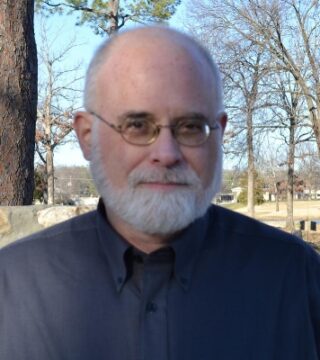 For over twenty years I have been in awe of David Jauss as a writer, as a colleague and teacher, and above all for his insight into the contradictory human heart. His short stories have been gathered together in two essential collections, Glossolalia and Nice People, and many of these stories, I believe, take their rightful place among the best short fictions in American literature. He is a master of the precise, illuminating moment, and the clarity of his prose is deepened by his parallel work as a poet.
For over twenty years I have been in awe of David Jauss as a writer, as a colleague and teacher, and above all for his insight into the contradictory human heart. His short stories have been gathered together in two essential collections, Glossolalia and Nice People, and many of these stories, I believe, take their rightful place among the best short fictions in American literature. He is a master of the precise, illuminating moment, and the clarity of his prose is deepened by his parallel work as a poet.
It’s not surprising that his poetry collections, Improvising Rivers and You Are Not Here, are, in turn, informed by his work as a fiction writer. Jauss’s poems aren’t afraid of the tug of narrative. And because of his love of music, particularly jazz, he is more attuned than most writers to the importance of rhythm, unexpected harmonies, and structural invention in writing, whether prose or poetry.
Jauss is also the author of two important collections of craft essays, Alone with All that Could Happen, and, most recently, Words Made Flesh. David and I were colleagues for ten years at the Vermont College of Fine Arts, and I remember quickly learning to attend his craft lectures. David knew how to see through the common clichés of creative writing advice, whether it might be the accepted modes of characterization, the “flow” of prose rhythm, use of epiphanies in short fiction, or constricting notions of what constitutes a plot. The audiences for his lectures were always filled with both students and fellow faculty members because we knew that, when David spoke, we would all become his apprentices, and happily so.
Philip Graham: As I was reading your latest collection of literary craft essays, Words Made Flesh, I kept thinking of this couplet from a poem in Fernando Pessoa’s The Keeper of Sheep (“co-written” with his heteronym Alberto Caeiro):
But what is a row of trees? There are just trees.
“Row” and the plural “trees” are names, not things.
Pessoa is speaking of a certain kind of sight here, one that rejects the hidden power of abstractions and instead embraces the importance of the particular. It seems to me you possess a similar sight. You read short stories and novels not as examples of categories, but as examples of themselves. It’s a different approach from most books on the craft of writing (and a more rewarding one), and I wonder how you came to this particular perspective.
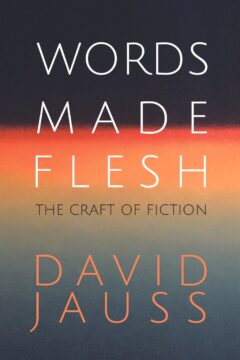
David Jauss: Well, maybe the best way I can answer your question is to say that I titled my book Words Made Flesh because that’s what I want from literature: words that somehow transcend their inevitably abstract nature and conjure something as real and particular as flesh. Words that not only make us think but make us feel what we think. Whenever I read or write a story, that’s what I’m looking for. And I don’t think it’s possible to read a story even halfway accurately unless you consider that story as particular: itself, not something that either lives up to or fails to live up to some abstract predetermined notion of what a story should be. Back in high school, the only things my English teachers seemed to want to discuss were a story’s conflict (we were given the choice of four uber-abstract options: man against man, man against nature, man against self, and man against society) and its theme (a.k.a. “what the author was trying to say,” a phrase that annoyed the hell out of me because it implied the author hadn’t already said what he or she wanted to say and needed us to step in and finish the job). This approach made stories seem even more abstract, more disconnected from life. What I wanted to know is how and why a story could affect me so strongly that I sometimes felt I had lived through the experiences it describes.
PG: Ha! You’re reminding me of my own long-ago dissatisfaction with the high school brand of literary analysis. While I can’t remember most of the books taught in English class during my teen years, I do remember the novels and stories I chose to read on my own, outside of school.
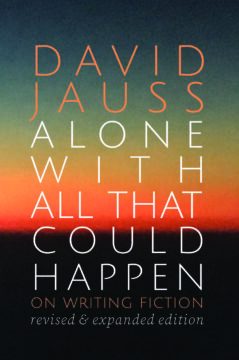 DJ: Because I was so disappointed by the way my high school teachers talked about literature, I started paying very close attention to whatever I was reading, sort of walling it off from everything else I’d read or heard and trying to see what it was in itself and how it actually worked, sentence by sentence, paragraph by paragraph, and scene by scene. I like what you say about approaching stories not as examples of categories but as examples of themselves. That’s how I try to read everything. I want to see what’s actually there, not what’s supposed to be there or said to be there, and I want to figure out how the author managed to make me feel and think the way I did. So while I do categorize stories in various ways in both Words Made Flesh and Alone with All that Could Happen, my primary focus has always been on describing what a given story actually does, not prescribing how stories in general should be written. As I see it, you can’t even begin to categorize stories accurately until you’ve understood how they achieve the effects they do. And although I started reading the way I do out of frustration with my high school teachers, I was lucky to have several teachers in both undergrad and grad school who helped me learn how to read better. And of course many, many writers—including Pessoa and his heteronyms—taught me a great deal, too.
DJ: Because I was so disappointed by the way my high school teachers talked about literature, I started paying very close attention to whatever I was reading, sort of walling it off from everything else I’d read or heard and trying to see what it was in itself and how it actually worked, sentence by sentence, paragraph by paragraph, and scene by scene. I like what you say about approaching stories not as examples of categories but as examples of themselves. That’s how I try to read everything. I want to see what’s actually there, not what’s supposed to be there or said to be there, and I want to figure out how the author managed to make me feel and think the way I did. So while I do categorize stories in various ways in both Words Made Flesh and Alone with All that Could Happen, my primary focus has always been on describing what a given story actually does, not prescribing how stories in general should be written. As I see it, you can’t even begin to categorize stories accurately until you’ve understood how they achieve the effects they do. And although I started reading the way I do out of frustration with my high school teachers, I was lucky to have several teachers in both undergrad and grad school who helped me learn how to read better. And of course many, many writers—including Pessoa and his heteronyms—taught me a great deal, too.
PG: “What a story actually does.” How radical! This is what makes your craft essays so riveting, the sense that we are witnessing a work of literary art being deeply seen, and that this path of insight can be learned and followed. But I’m guessing that this sort of “blinders off” reading skill wasn’t easily achieved. Can you recall a specific “aha!” moment in your reading when you were younger?
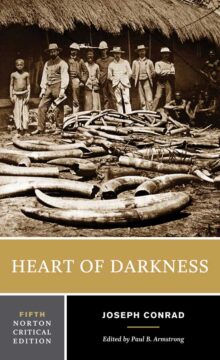 DJ: I think I probably had more than a few “aha!” moments early on but one stands out in my memory—and it’s one that found its way into Words Made Flesh. I was taking an undergrad Intro to Lit course and one of our texts was Heart of Darkness. My “aha!” moment came near the end, when Marlow tells Kurtz’s Intended that his last words were her name. As soon as I read that lie, I remembered what Marlow says earlier in the novella about how much he “hates, detests, and can’t bear” a lie, then goes on to admit that he once went “near enough” to a lie by not correcting a young man’s false assumption that Marlow had influential friends in Europe. I felt something like a jolt of electricity had leapt from that moment of the story to this one, and it literally knocked the breath out of me. What I realized was that Marlow was telling a “near lie” in order to preserve the Intended’s false assumptions about Kurtz and that beneath that lie was a metaphorical truth that was “too dark” to tell directly: that she was “the horror, the horror”—Kurtz’s actual last words—and the heart of darkness was in all of us, even someone as refined and civilized as the Intended. That realization literally knocked the breath out of me, and I still trust my reaction to his lie. I believe everything in a great work of art is there for a reason, and I can’t help but believe Marlow’s comment about a near lie is there to set us up to realize that Marlow is telling one at the end.
DJ: I think I probably had more than a few “aha!” moments early on but one stands out in my memory—and it’s one that found its way into Words Made Flesh. I was taking an undergrad Intro to Lit course and one of our texts was Heart of Darkness. My “aha!” moment came near the end, when Marlow tells Kurtz’s Intended that his last words were her name. As soon as I read that lie, I remembered what Marlow says earlier in the novella about how much he “hates, detests, and can’t bear” a lie, then goes on to admit that he once went “near enough” to a lie by not correcting a young man’s false assumption that Marlow had influential friends in Europe. I felt something like a jolt of electricity had leapt from that moment of the story to this one, and it literally knocked the breath out of me. What I realized was that Marlow was telling a “near lie” in order to preserve the Intended’s false assumptions about Kurtz and that beneath that lie was a metaphorical truth that was “too dark” to tell directly: that she was “the horror, the horror”—Kurtz’s actual last words—and the heart of darkness was in all of us, even someone as refined and civilized as the Intended. That realization literally knocked the breath out of me, and I still trust my reaction to his lie. I believe everything in a great work of art is there for a reason, and I can’t help but believe Marlow’s comment about a near lie is there to set us up to realize that Marlow is telling one at the end.
PG: I have to admit, having lived in small villages in West Africa I have long disliked Heart of Darkness. And the novel’s final pages with the Intended felt like little more than a sentimental add-on. But your reading transformed my sense of that scene. The correspondence about lying seems clear, though I’d never noticed it before. Your “aha” moment became my “aha” moment. And that’s one of the reasons why Words Made Flesh is such an important book, because you provide so many of those “aha” moments, a cascade of them in chapter after chapter.
For example, the chapter “What Chekhov Teaches Us about Endings” has twelve different sections (with titles such as “Echo Endings” and “False Climaxes”), and each of them contains multiple examples of how Chekhov artfully undermines a reader’s expectations of how to end a short story, and how those often-unusual endings serve to illuminate the stories’ characters. I felt I was on an epic journey throughout this chapter, seeing through your better eyes how to properly read. Those 25 pages seem to contain a lifetime of insight. I’d love to hear some backstory about how you pulled it all together.
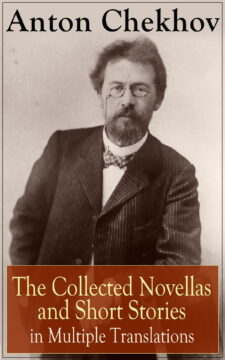 DJ: Well, I can’t quite claim a lifetime of insight into Chekhov. When I first read him, I thought his stories were boring and plotless and I didn’t understand what all the fuss was about. But eventually the aha! moments piled up and I gradually learned how to read him and now have long considered him short fiction’s GOAT. He’s been a major influence on virtually every modern and contemporary fiction writer, of course, but when it comes to endings, most of us have been far more influenced by Joyce and his climactic epiphanies. So many stories end with a blast-of-trumpets/choir-of-angels moment of sudden insight that such endings began to seem obligatory and clichéd to me. In one of my earlier essays, I estimated that I’ve vicariously experienced more than 25,000 characters’ brilliant, life-changing realizations in my reading life but didn’t feel more than one whit wiser. But I always feel wiser after reading Chekhov, whose stories consistently end in surprising and innovative ways. I wrote my essay about his endings in hopes that it’d inspire some of us to follow his lead and look for new and better ways to end our stories.
DJ: Well, I can’t quite claim a lifetime of insight into Chekhov. When I first read him, I thought his stories were boring and plotless and I didn’t understand what all the fuss was about. But eventually the aha! moments piled up and I gradually learned how to read him and now have long considered him short fiction’s GOAT. He’s been a major influence on virtually every modern and contemporary fiction writer, of course, but when it comes to endings, most of us have been far more influenced by Joyce and his climactic epiphanies. So many stories end with a blast-of-trumpets/choir-of-angels moment of sudden insight that such endings began to seem obligatory and clichéd to me. In one of my earlier essays, I estimated that I’ve vicariously experienced more than 25,000 characters’ brilliant, life-changing realizations in my reading life but didn’t feel more than one whit wiser. But I always feel wiser after reading Chekhov, whose stories consistently end in surprising and innovative ways. I wrote my essay about his endings in hopes that it’d inspire some of us to follow his lead and look for new and better ways to end our stories.
PG: Early in your reading of Chekhov’s stories, was there one story in particular that impressed you with its ending, that alerted you to the richness to be discovered in the rest of his fiction?
DJ: Yes, “Gusev.” It has the most astonishing ending I’ve ever read—utterly unexpected, original, and powerful as hell. The first dozen or so pages of the story convey the delirious thoughts of Gusev, one of several sick soldiers in a ship’s infirmary. It’s clear that Gusev is going to die but just when we’re expecting the kind of epiphanic death scene we see in “The Death of Ivan Ilyich” and other stories of that time (and now), Chekhov shifts the point of view away from him—and not to another character but to non-human nature. He describes Gusev’s burial at sea from the perspective of a school of pilot fish, a shark, and, even, the sea itself, which at first “frowns” at the sky above it but then reflects its “tender, joyous, passionate colors for which it is hard to find a name in the language of man.” The story ends, in short, with the language of nature. By personifying impersonal nature, Chekhov depersonalizes Gusev and emphasizes nature’s indifference to his death and his life—and by extension, to our deaths and our lives. When I read that ending, I realized Chekhov was an author unlike any other I’d ever read and I needed to reread the stories that I had thought merely stopped rather than ended and try to discover just what he was doing in his endings.
 PG: Ah yes, the joy and necessity of rereading! And maybe that’s the essential power of your craft essays, in both Words Made Flesh and Alone with All that Could Happen: your insights send a reader back to the original texts, to see with new eyes, rather than squint through the lens of some ideological hobbyhorse about what a story or a novel is supposed to be. We’re back to Pessoa’s very specific tree, rather than a gathering of trees fit into the abstract notion of a “row,” aren’t we? I’m thinking especially about your essay “What We See with,” in which you redefine the notion of plot. Rather than recommending “a single, monolithic organizing principle, one characterized by a focus on causality and character change,” as most authors of fiction writing guides tend to do, you instead delve into the specific structures of individual stories and novels. And in so doing, you come up with several different possibilities of how a plot might unfold. Plots can be episodic or juxtapositional, lyrical or associative, and yet still engage a reader to the last page.
PG: Ah yes, the joy and necessity of rereading! And maybe that’s the essential power of your craft essays, in both Words Made Flesh and Alone with All that Could Happen: your insights send a reader back to the original texts, to see with new eyes, rather than squint through the lens of some ideological hobbyhorse about what a story or a novel is supposed to be. We’re back to Pessoa’s very specific tree, rather than a gathering of trees fit into the abstract notion of a “row,” aren’t we? I’m thinking especially about your essay “What We See with,” in which you redefine the notion of plot. Rather than recommending “a single, monolithic organizing principle, one characterized by a focus on causality and character change,” as most authors of fiction writing guides tend to do, you instead delve into the specific structures of individual stories and novels. And in so doing, you come up with several different possibilities of how a plot might unfold. Plots can be episodic or juxtapositional, lyrical or associative, and yet still engage a reader to the last page.
DJ: You’re absolutely right about rereading. Just as revision is essential to good writing, rereading is essential to good reading—and to maximum pleasure and understanding. Reading a story once is like a one-night stand; rereading it numerous times over the course of years is like a marriage, and I recommend that all readers be polygamists. And you’re right again that each time I read a story, I’m trying to see it, Pessoa-like, for what it actually is, not for what it’s abstractly purported or supposed to be. One of the most important things I’ve learned from reading stories this way is that many are organized by principles other than causality and character change. Unfortunately, most literary scholars and authors of creative writing guides tend to dismiss non-causal stories as “plotless” and make little or no effort to discover how they’re structured. In “What We See with,” I discuss forty-some stories from a wide variety of old and new masters that exemplify seven different organizing principles. Most of these stories are well-known and frequently anthologized and taught, but their innovative approaches to plot have been largely ignored.
PG: I was particularly impressed by your analysis of a story by Lucia Berlin, from her selected short stories. I’ve had that collection on a bookshelf for years, and I’m ashamed to say that I’ve never quite gotten around to reading it. But now Berlin’s book has moved from the bookshelf to my night table!
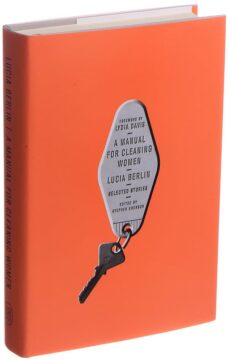 DJ: Lucia Berlin’s “A Manual for Cleaning Women” is one of many excellent examples of a type of story that combines two or more plot forms to create a hybrid plot. Her story is an episodic, non-chronological, and non-causal account of the narrator’s bus rides to work, conversations with other cleaning women, and snippets of scenes with the various people whose houses she cleans, but as the title suggests, Berlin’s narrator Maggie regularly departs from the episodic account of her work life to pass along expository advice to cleaning women.
DJ: Lucia Berlin’s “A Manual for Cleaning Women” is one of many excellent examples of a type of story that combines two or more plot forms to create a hybrid plot. Her story is an episodic, non-chronological, and non-causal account of the narrator’s bus rides to work, conversations with other cleaning women, and snippets of scenes with the various people whose houses she cleans, but as the title suggests, Berlin’s narrator Maggie regularly departs from the episodic account of her work life to pass along expository advice to cleaning women.
But this expository plot is not the only one that interrupts the episodic plot; ultimately, the story also contains a causal plot about Maggie and her grief over her husband’s recent death. Like the expository “advice” plot, the causal plot is woven into the episodic plot in bits and pieces, creating a contrapuntal rhythm to the surface action of the story, and we begin to realize that Maggie is desperately trying to repress her grief by focusing on minor, even inconsequential matters. Then, in the final two pages, the surface episodic plot and the implied causal plot intersect: Berlin gives us a scene with Maggie and Mrs. Johnson, an eighty-year-old widow who distracts herself from the loss of her husband by working on picture puzzles. Mrs. Johnson is distraught because there’s a piece missing from one of the puzzles, but Maggie finds it for her and the old woman is almost as happy as if she found what she’s really missing—her husband. Only after this encounter with another grieving widow do we get the climactic moment of Maggie’s causal plot, which has in effect been a “shadow” plot. The story’s last sentence reads: “I finally weep.” Combining plot forms—be they causal or non-causal—is a major way that fiction writers have lived up to Ezra Pound’s injunction to “Make it new,” and recognizing hybrid plots can help readers not only understand the stories’ originality but also understand how it was achieved.
PG: Since you’ve mentioned creative writing guides, I’d like to discuss your chapter on characterization, “Homo Fictus vs. Homo Sapiens.” You find much of the advice about this subject in many of these guides as wrong-headed, especially when that advice is based on conventional wisdom rather than open-eyed close-reading. And that conventional wisdom goes back at least to E. M. Forster, the conviction you succinctly describe in Words Made Flesh that “characters don’t become ‘real’ until we know everything there is to know about them.” Though of course in our daily lives the people we are closest to, the people we think we know best, are also laced with mystery.
DJ: With the possible exception of plot, creative writing guides are typically least helpful on the subject of characterization. The authors of such guides often quote approvingly Keats’s famous definition of the quality most essential to “form a Man of Achievement, especially in Literature,” a quality that “Shakespeare possessed so enormously.” That quality, he said, was Negative Capability, which he defines as the ability to be “in uncertainties, mysteries, doubts, without any irritable reaching after fact and reason.” Yet when it comes to characterization, the authors of craft guides almost universally recommend what I’d call Positive Capability, the ability to know with absolute certainty every blessed thing about our principal characters, including such trivial matters as the kind of underwear they prefer. And some craft guides go so far as to say we should know everything about our protagonists before we begin writing. Me, I believe that any character who is fully known at any point in the story, much less before the story is even started, is too devoid of mystery to be plausible. As Robert Boswell has said, “Here’s another definition of stereotype: any character that is fully known.” I believe genuinely successful characters are not assembled from a pre-fab list of factoids but are discovered through the process of writing about them and imaginatively experiencing what they experience.
PG: I never bought into the Know Everything school of thought, even though that approach was often espoused in the craft texts I taught to my undergraduates. I found myself teaching against some of the advice in those books. Especially since my own experience in creating characters in fiction was a messy, intuitive, often surprising process. Sort of like getting to know any other living, breathing human being.
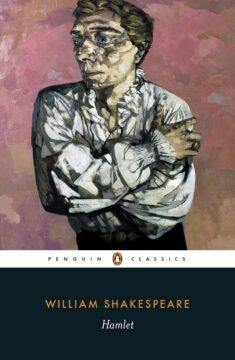 DJ: Virtually all craft guides also affirm that the key to characterization is motivation, which they associate with the character’s desire. But equating desire and motivation raises the question of what motivated the desire. Why does Ahab want to wreak vengeance on Moby-Dick for taking his leg while Captain Boomer, who lost an arm to the same whale, doesn’t? And what if a character has a clearly defined desire and achieves it, as “the charming Vanda” does in Chekhov’s “A Gentleman Friend,” but the author is far more interested in a desire the character lacks? In any case, in real life—and in great literature—motivation is never so completely understood. Witness Hamlet, that bundle of contradictions who still fascinates us all these centuries later. As the scholar K. L. Cook has said, Hamlet seems “both brilliant and foolish, spiritual and crude, melancholy and manic, empathetic and callous, indecisive to the point of paralysis at one point and then suicidally impulsive at others.” And Hamlet himself says in one of his soliloquies that “I do not know / Why yet I live to say ‘This thing’s to do,’ / Sith I have cause, and will, and strength, and means, / To do’t.” I think truly realistic characters are, like Hamlet, not so entirely aware of their motivations that we can fully know them. I like George Saunders’s definition of a successful character: the “sum total of moments we can’t explain.”
DJ: Virtually all craft guides also affirm that the key to characterization is motivation, which they associate with the character’s desire. But equating desire and motivation raises the question of what motivated the desire. Why does Ahab want to wreak vengeance on Moby-Dick for taking his leg while Captain Boomer, who lost an arm to the same whale, doesn’t? And what if a character has a clearly defined desire and achieves it, as “the charming Vanda” does in Chekhov’s “A Gentleman Friend,” but the author is far more interested in a desire the character lacks? In any case, in real life—and in great literature—motivation is never so completely understood. Witness Hamlet, that bundle of contradictions who still fascinates us all these centuries later. As the scholar K. L. Cook has said, Hamlet seems “both brilliant and foolish, spiritual and crude, melancholy and manic, empathetic and callous, indecisive to the point of paralysis at one point and then suicidally impulsive at others.” And Hamlet himself says in one of his soliloquies that “I do not know / Why yet I live to say ‘This thing’s to do,’ / Sith I have cause, and will, and strength, and means, / To do’t.” I think truly realistic characters are, like Hamlet, not so entirely aware of their motivations that we can fully know them. I like George Saunders’s definition of a successful character: the “sum total of moments we can’t explain.”
PG: It’s the unknowability of others that ultimately keeps us returning to them. People (and literary characters) aren’t jigsaw puzzles that can be finished. And we are always “refreshing” our memories as we go along, adding nuance (if we’re paying attention) to what we thought we understood about a friend, a lover, a parent, a spouse, a character.
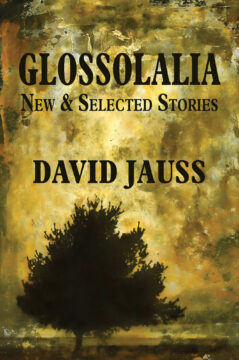 DJ: Yes, and our understanding of the various techniques and strategies available to fiction writers are also things we “refresh” throughout our lives. A former student recently asked me what I’d title my two craft books if they were combined into one volume, and I answered with a joke that isn’t really a joke: Everything I Wish I’d Known when I Started Writing. If I’d known fifty-some years ago what I know now, I think I would have written much better stories. There are a few stories that I’m mostly pleased with—“Glossolalia,” “Torque,” “Tell Me Something,” “What They Didn’t Notice,” and “Firelight”—and there are passages, scenes, and characters in other stories that please me, but on the whole I’m disappointed with the stories I’ve written. I’ve gotten a lot of praise for them and even won some awards, but I mostly just notice their flaws. All of my stories have been revised numerous times throughout my life—like Bernard Malamud, I love “the flowers of afterthought”—so some of my later understanding has worked its way into them, I suppose, but I’m sure they all would be a good deal better if I’d known more when I wrote their first versions.
DJ: Yes, and our understanding of the various techniques and strategies available to fiction writers are also things we “refresh” throughout our lives. A former student recently asked me what I’d title my two craft books if they were combined into one volume, and I answered with a joke that isn’t really a joke: Everything I Wish I’d Known when I Started Writing. If I’d known fifty-some years ago what I know now, I think I would have written much better stories. There are a few stories that I’m mostly pleased with—“Glossolalia,” “Torque,” “Tell Me Something,” “What They Didn’t Notice,” and “Firelight”—and there are passages, scenes, and characters in other stories that please me, but on the whole I’m disappointed with the stories I’ve written. I’ve gotten a lot of praise for them and even won some awards, but I mostly just notice their flaws. All of my stories have been revised numerous times throughout my life—like Bernard Malamud, I love “the flowers of afterthought”—so some of my later understanding has worked its way into them, I suppose, but I’m sure they all would be a good deal better if I’d known more when I wrote their first versions.
PG: There’s a certain humbleness—which is as far from false modesty as can be—in this and your other responses in our conversation that I think are key to your powers as a reader, David. You don’t approach any work of art believing that you know more than the author. Instead, you read each work as if an apprentice, despite your many accomplishments as a writer of fiction yourself. You’re open to fresh insight and surprise. And with your own developing short stories you apply this same openness. Even after they have been published, you continue the dialogue. The stories you’ve mentioned above are among my favorite stories of all time, but I have many, many more favorites. “Brutality” is a story that has haunted me for years, the way it so tenderly depicts the potentially dangerous moment when a couple has to expand their understanding of each other. I’ve never read another story quite like it.
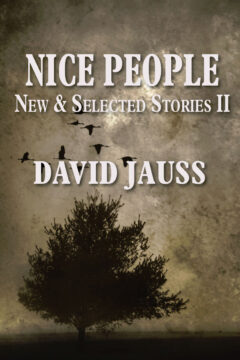 I’m so curious about your continuing dedication to revision. I wonder if you could share your thought process when you realized one of your stories, post-publication, could be improved?
I’m so curious about your continuing dedication to revision. I wonder if you could share your thought process when you realized one of your stories, post-publication, could be improved?
DJ: Some writers believe that the revision process should end when a work is published, but I think it should end only when the author stops breathing. My old friend and one-time colleague Richard Hugo disparaged writers who revised previously published work as “time effacers,” but I don’t think the purpose of a work of literature is to be a snapshot of who I was or what I thought at a given time in my life. And since time plans to efface me, I don’t feel the least bit guilty about effacing as much of it as I can.
In my essay “The Flowers of Afterthought,” I discuss fourteen strategies for revision, all of which I’ve used over and over for many years. With the exception of my first book, Crimes of Passion, which I very substantially rewrote before Dzanc Books reprinted it twenty years later, the revisions I’ve made to my previously published stories have been relatively minor—mostly cuts and additions and numerous sentence-level changes. I revised all thirty of the stories that appear in my three other books, and I revised five of them again before they appeared in anthologies. I will consider the revisions “final” only when my EKG flatlines.
PG: There’s a certain attitude that most writers, I think, have—almost a superstitious one—that the published version is the final version. Though I think many writers also believe that any published story or novel could be improved upon, if only. If only it hadn’t become an historical record of one’s inner life. Hey, don’t mess with the archeological field site! But why can’t a story continue to live and breathe, if there’s more to be discovered?
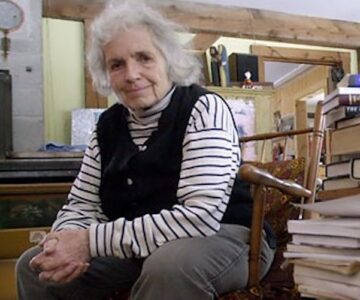 DJ: I haven’t always been patient enough to delay publishing my stories until they truly deserved to appear, however. One story I published much too early was called “Dear Husband” and it was in the form of a letter a woman wrote to her husband to explain why she was leaving him. I regretted publishing that story almost immediately, and over the course of a couple years I revised it a few times but still wasn’t happy. The only truly substantial revisions of it I did were inspired by something the great Grace Paley said during a talk at Vermont College of Fine Arts, where I was teaching. She said “Every story is actually two stories and the climax is when they collide.” As soon as she said that, I realized “Dear Husband” was at best only one story and I set about working a second story into it. I dumped the first-person letter format and wrote a third-person version that focused on both the woman and her husband and their conflicts, one that drove them apart and another that brought them back together but also created a new conflict between mother and daughter. The story grew to be almost three times its original length and I don’t think more than a half dozen sentences of the first version remained. I thought the story was as good as I could make it at the time and sent it to one of my favorite magazines. After the story was published, I read it a couple of times to audiences, including once at the U of Illinois, where a certain very wise and talented fiction writer gave me some terrific advice about how to improve it. So I revised the story one more time before I published it in my book Glossolalia: New & Selected Stories (Press 53, 2013), this time under the title “Constellations.” I’m still not 100% satisfied with the story but I believe I’ve made it a far, far better story than it was originally, and I’m happy I effaced all of the times I wrote earlier versions of it.
DJ: I haven’t always been patient enough to delay publishing my stories until they truly deserved to appear, however. One story I published much too early was called “Dear Husband” and it was in the form of a letter a woman wrote to her husband to explain why she was leaving him. I regretted publishing that story almost immediately, and over the course of a couple years I revised it a few times but still wasn’t happy. The only truly substantial revisions of it I did were inspired by something the great Grace Paley said during a talk at Vermont College of Fine Arts, where I was teaching. She said “Every story is actually two stories and the climax is when they collide.” As soon as she said that, I realized “Dear Husband” was at best only one story and I set about working a second story into it. I dumped the first-person letter format and wrote a third-person version that focused on both the woman and her husband and their conflicts, one that drove them apart and another that brought them back together but also created a new conflict between mother and daughter. The story grew to be almost three times its original length and I don’t think more than a half dozen sentences of the first version remained. I thought the story was as good as I could make it at the time and sent it to one of my favorite magazines. After the story was published, I read it a couple of times to audiences, including once at the U of Illinois, where a certain very wise and talented fiction writer gave me some terrific advice about how to improve it. So I revised the story one more time before I published it in my book Glossolalia: New & Selected Stories (Press 53, 2013), this time under the title “Constellations.” I’m still not 100% satisfied with the story but I believe I’ve made it a far, far better story than it was originally, and I’m happy I effaced all of the times I wrote earlier versions of it.
PG: Ah, “Constellations,” another favorite. There’s a quite dramatic (and essential scene) in that story, but for me the greatest drama is the wife quietly discovering the ability to forgive. It’s the invisible current in a story that brings life. Understanding what she couldn’t before, she sees, deeply, and this fictional moment seems to track well with your achievements as a literary critic: allowing oneself to see with open eyes, and not allowing that gaze to skim over what doesn’t fit some preconceived notion. Thank you, David, for this conversation that has allowed my already high appreciation of your essays and stories to expand.
DJ: I can’t thank you enough for all of your generous words about my essays and stories. Since you asked me not to end our interview by complimenting you (even though that’s exactly what I’d most like to do, given that I revere your writing and would love to encourage the whole wide world to read your astonishing new novel What the Dead Can Say), I’ll close with one of my favorite quotes about writing. In her Paris Review interview, Jean Rhys says, “Listen to me. All of writing is a huge lake. There are great rivers that feed the lake, like Tolstoy and Dostoevsky. And there are mere trickles, like Jean Rhys. All that matters is feeding the lake. I don’t matter. The lake matters. You must keep feeding the lake.” I hope Words Made Flesh and Alone with All that Could Happen will help whoever reads them to feed the lake.
***
David Jauss is the author of the craft books Words Made Flesh: The Craft of Fiction and Alone with All that Could Happen: On Writing Fiction and four collections of short stories, most recently Glossolalia: New & Selected Stories and Nice People: New & Selected Stories II. His fiction has been reprinted in the Best American Short Stories, O. Henry Award, and Pushcart Prize anthologies and in The Best Short Stories from The Pushcart Prize. His honors include the AWP Award for Short Fiction, a National Endowment for the Arts Fellowship, and a James A. Michener/Copernicus Society of America Fellowship. He taught fiction writing for many years at the University of Arkansas-Little Rock and in the low-residency MFA in Writing Program at Vermont College of Fine Arts.
Philip Graham is the author of eight books of fiction and nonfiction, including The Art of the Knock: Stories; The Moon, Come to Earth: Dispatches from Lisbon; and (as Author Unseen) the novel What the Dead Can Say. His work has appeared in The New Yorker, Washington Post Magazine, Paris Review, McSweeney’s, and elsewhere, and has been reprinted or translated in seven countries. A Professor Emeritus of the University of Illinois, Urbana-Champaign, he was a co-founder of the literary/arts journal Ninth Letter and is currently the Editor-at-Large for the journal’s website.
